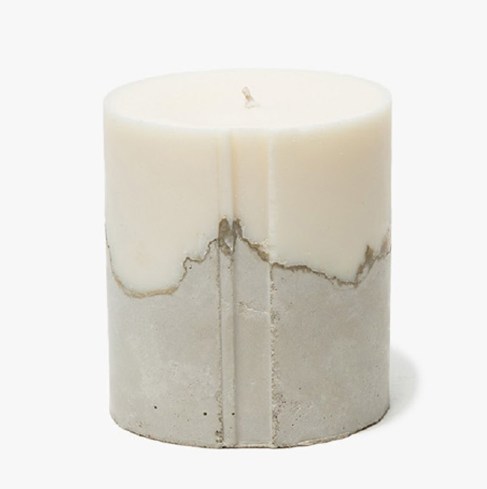
IN THIS ARTICLE:
Making friends with DIY mistakes;
No such thing as too many candles, am I right?
Remember those concrete candles I blogged about last month? After some trial and error, I finally delivered my final video (above) and written tutorial (found here on eHow). I also went with cement and not concrete. I’m happy with the final outcome but, man oh man, the road there wasn’t exactly a straight line (even though the video makes it appear so.)
Thing is, folks, this wasn’t the first video I created for this project. The first was more than a bit problematic, and I knew it when I was shooting and editing it — but I was so effing frustrated that I finished the damn thing, skipping over some important steps in order to edit out all of the problematic bits, and was ready (SO ready) to submit it and wash my hands of it all.
Here was the main (but not the only) problem — I didn’t use a mold-release agent (like Pam) because some people said that it would discolor the cement AND I was pretty sure that it would be fairly easy to cut open the plastic containers I chose with a utility knife. WRONG. I could tell you how wrong, but it’s easier just to show you.
In the end, I used a rotary tool to cut the candles out of the molds (like you would a mended limb from a plaster cast). Every single candle got damaged, but I just shot them from their good angles.
But then questions came in about the process and “what kinds of containers did you use that you could easily cut with a knife?” and I knew that the tutorial — as is — was simply not going to fly. It was also well below my own standards, and I knew it. So, I apologized for my less than stellar work, scrapped the whole video, and started from scratch.
Days of work down the drain? Loads of materials wasted? Nope. Not at all. This is going to sound cliched and Pollyanna but these mistakes were a learning experience. All part of the DIY process. Love your mistakes fellow crafters. Love every single one.
Veteran crafters already know the importance of learning from mistakes (and even embracing them in an ahem-I-totally-meant-to-do-that sort of way), but if you’re new to the maker game, an epic fail may put you off of ever trying to make anything again.
But here’s a secret so many DIYers keep hidden: rare is the project that is totally straightforward and smooth sailing, no matter how simple it may appear. There are just too many variables (read: a million different ways to screw it all up), and tutorial creators can’t account for (read: warn you about) them all.
How to start a project over without going crazy (or how I do it, at least)
- Breathe deeply and slowly count to 10.
- Visualize the changes that you’ll make to the process and how much smoother take two will be.
- Visualize the outcome.
- Most importantly, if you have the time, start over THE NEXT DAY. If you’ve just spent hours attempting to do something, the minute you realize you’ll have to start over is the worst. You’re still hot-headed and recovering from the irritation of your frustrated attempts. Trust me, you will feel so much less hot-headed the next day, and when things go smoother for you (because of all the lessons learned) your previous failure(s) will be like a distant memory.
Embrace the Fail
We’ve all heard that stories about how some of humankind’s most important (or just plain cool) discoveries were borne from mistakes:
- Penicillin
- The microwave oven
- Fireworks
- Scotchguard upholstery protector
- The Slinky
Made a mistake you made when knitting your sweater sleeve? Consider embracing it and repeating the same mistake on the other sleeve. Could turn out looking pretty cool. Symmetry is a DIYers friend!
Totally screwed up a lattice pie crust or other baked good, just slap the word “rustic” in front of the recipe and call it a day. Same goes for a bad paint job on a craft. Other options: weathered, aged. Want to leave something unfinished? Try industrial or deconstructed. And of course there’s the old familiar standby (albeit currently out of fashion) — shabby chic.
In the case of my candles, the wax seeped through the cracks and coated some of the cement. I could have sanded those down, but the effect looks kinda neat, right? Also, I’m digging the porous look created by the accidental air bubbles.

Some of the cement was also discolored by the wax, but this gave them a terrific stratified look. In fact, I might like these more than the cleaner ones.

And, best of all, I ended up with a bunch of candles. I love candles. Can’t have enough. So the whole experience was a win-win-win as far as I’m concerned.










